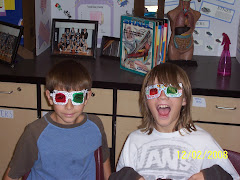
EARTHWORMS RUNNING A MUCK IN THE CLASSROOM
By: Jordynn Casetta 4th period
WORM FACTS
An earthworm can grow only so long. The size of a well-fed adult will depend on what kind of worm it is, how many segments it has, and how old it is. An Lumbricus terrestris will be from 90-300 millimeters long. A worm has no arms, legs or eyes. There are approximately 2,700 different kinds of earthworms. Worms live where there is food, moisture, oxygen and a favorable temperature. If they don’t have these things, they go somewhere else. In one acre of land, there can be more than a million earthworms. The largest earthworm ever found was in South Africa and measured 22 feet from its nose to the tip of its tail. Worms tunnel deeply in the soil and bring subsoil closer to the surface mixing it with the topsoil. Slime, a secretion of earthworms, contains nitrogen. Nitrogen is an important nutrient for plants. The sticky slime helps to hold clusters of soil particles together in formations called aggregates. Charles Darwin spent 39 years studying
earthworms more than 100 years ago. Worms are cold-blooded animals.Earthworms have the ability to replace or replicate lost segments. This ability varies greatly depending on the species of worm you have, the amount of damage to the worm and where it is cut. It may be easy for a worm to replace a lost tail, but may be very difficult or impossible to replace a lost head if things are not just right.Baby worms are not born. They hatch from cocoons smaller than a grain of rice. The Australian Gippsland Earthworm grows to 12 feet long and can weigh 1-1/2 pounds. Even though worms don’t have eyes, they can sense light, especially at their anterior (front end). They move away from light and will become paralyzed if exposed to light for too long (approximately one hour). If a worm’s skin dries out, it will die. Worms are hermaphrodites. Each worm has both male and female organs. Worms mate by joining their clitella (swollen area near the head of a mature
worm) and exchanging sperm. Then each worm forms an egg capsule in its clitellum. Worms can eat their weight each day.






2 comments:
mr.iannone i think your blog is great! I also think your snake is cool.and your birds are cool looking,also i enjoyed your blog. Dylan Anderson
Hi Mr. Iannone!! This is Jordynn aka Princess from 2008-2009 school year!! I can't believe you still have the picture of my earthworm! That's crazy! :D Hahaha well I'll leave you alone now! I WUVV YOUUUU!!! (:
Jordynn Casetta
2008-2009 School Year
4th Period
Post a Comment